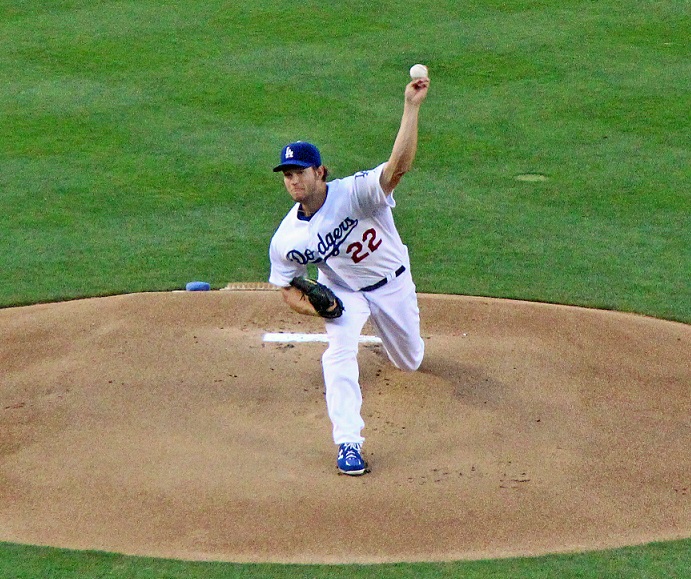One of the more confusing parts of Major League Baseball is free agency; more specifically, the actual rules of free agency as to when it can and cannot occur and what can and cannot be discussed.
The rules governing free agency are covered under Article XX-B of the 2012-2016 MLB Collective Bargaining Agreement (CBA) and let me tell you, reading the CBA is like reading the fine print on a new car contract or one of those internet disclaimers that we all scroll through and click “I have read and understand the above” – without having done either.
Rather than reading Article XX-B of the CBA (which is like watching paint dry), I’ll try to sum up the free agency thing for you in a nutshell.
A player officially becomes a free agent at 9:00 A.M. Eastern Time on the day following the last game of the World Series, which has already occurred.
When a player officially becomes a free agent, the team that he is currently on has until 11:59 P.M. Eastern Time on the fifth day following the last game of the World Series (referred to as the “Quiet Period”) to discuss the possibility of being re-signed by that team. No other teams are permitted to contact a pending free agent during the Quiet Period. As strange (and dumb) as it may sound, the player and the team “…shall not negotiate terms or contract with each other.” They may, however, discuss:
- the Player’s interest in playing for the Club, and the Club’s interest in having the Player play for it;
- the Club’s plans about how it intends to utilize the Player’s services (as a starting pitcher or reliever, as a designated hitter or not, platooning, etc.);
- the advantages and disadvantages of playing for the Club including the nature of the organization, the climate of the city, availability of suitable housing, etc.;
- length of contract;
- guarantee provisions;
- and no-trade or limited no-trade provisions
If these things are acceptable to both the Player and the Club, they can then negotiate the terms (money) of the contract and actually sign a contract at the conclusion of the Quiet Period. If these things are not acceptable to both the Player and the Club or the Club has made no attempt to contact the Player during the Quiet Period (and after 11:59 P.M. Eastern Time of the fifth day following the last game of the World Series), the Player can then be approached (or can themselves approach) any other Clubs in an attempt to negotiate a contract.
Although some players re-sign with their former team, most of them do not, opting instead to test the free agent market with hopes of getting several interested Clubs to bid against one another (in terms of money and/or years) to increase their value. The Player’s agent will also try to increase their client’s value by embellishing on their future potential or comparing their client with other similar high-dollar free agents. This doesn’t always work, however, and occasionally it backfires completely, leading to contracts that are well below what they had hoped for or lower than offers that they may have turned down earlier in the off-season. On the other hand, team owners who conspire against free agents in an attempt to keep them out of the game are guilty of collusion, for which there are very serious penalties and sanctions.
To date, the single-highest free agent contract ever signed in MLB history is, of course, that of Yankees third baseman Alex Rodriguez who, on December 13, 2007, signed a 10-year contract worth $275 million. Next is the 10-year $240 million contract signed during the 2011 off-season by Albert Pujols with the Angels. Last season’s big winner was Reds first baseman Joey Votto whose 10-year/$225 million begins in 2014. All of this said, it is believed that the Dodgers own Clayton Kershaw will become baseballs first $300+ million player, quite possibly within the next few weeks.

Likely 2013 NL Cy Young Award winner Clayton Kershaw may soon become baseball’s first $300 million player. (Photo credit – Ron Cervenka)
Heading into the 2013 off-season, the Dodgers have twelve free agents, two of whom have options for 2014. They are:
- Chris Capuano ($8 million mutual option for 2014 with a $1 million buyout)
- Mark Ellis ($5.75 million club option for 2014 with a $1 million buyout)
- Jerry Hairston
- J.P. Howell
- Carlos Marmol
- Ricky Nolasco
- Nick Punto
- Skip Schumaker
- Juan Uribe
- Edinson Volquez
- Brian Wilson
- Michael Young
Of these twelve, I believe that the Dodgers will attempt to re-sign J.P. Howell, Carlos Marmol, Juan Uribe, Edinson Volquez and Brian Wilson. I do not believe that they will exercise the options for Chris Capuano or Mark Ellis and will instead give each their $1 million buyout and send them into the free agent market.
There are a number of other important factors in Article XX-B of the CBA, such as draft compensation picks based on the Player’s status as either a Type-A or Type-B free agent, but this should give you an understanding of how the basic free agency process works.




 October 31st, 2013 at 6:00 am
October 31st, 2013 at 6:00 am  by Ron Cervenka
by Ron Cervenka 
 Posted in
Posted in 

@Think_BlueLA does Cap’s mutual option mean both have to agree to his return?
The short answer is ‘yes’ but the long answer is that there is more to it than that.
Here is an excellent article by Wendy Thurm of Fan Graphs the describes a mutual option well: Mutual Options
Of the 12 listed above I would like to see Howell, Punto, Uribe and Wilson resigned. I’m not that interested in Marmol and Volquez.
I find following what takes place between the FAs and the teams very interesting during the offseason.
You can never have too much pitching and Marmol and Volquez will probably come relatively cheap. Both were very good towards the end of the season after struggling early.
That said, I do not see either of them being re-signed until after the Tanaka and/or David Price things are settled.
I think Marmol would be a big mistake but ok with Volquez. Rick can work with Volquez but don’t think any coaching with Marmol will work with him. He’s going to have a 5+ era – my bet.
You are probably right, Linda. I was going off what Chuck Crim said of Marmol – but then, what’s he supposed to say, right?
By the way – Marmol finished the regular season with a 2.53 ERA with the Dodgers. Belisario’s was 3.87. Just sayin’.